- Details
- Category: Astronomical Events
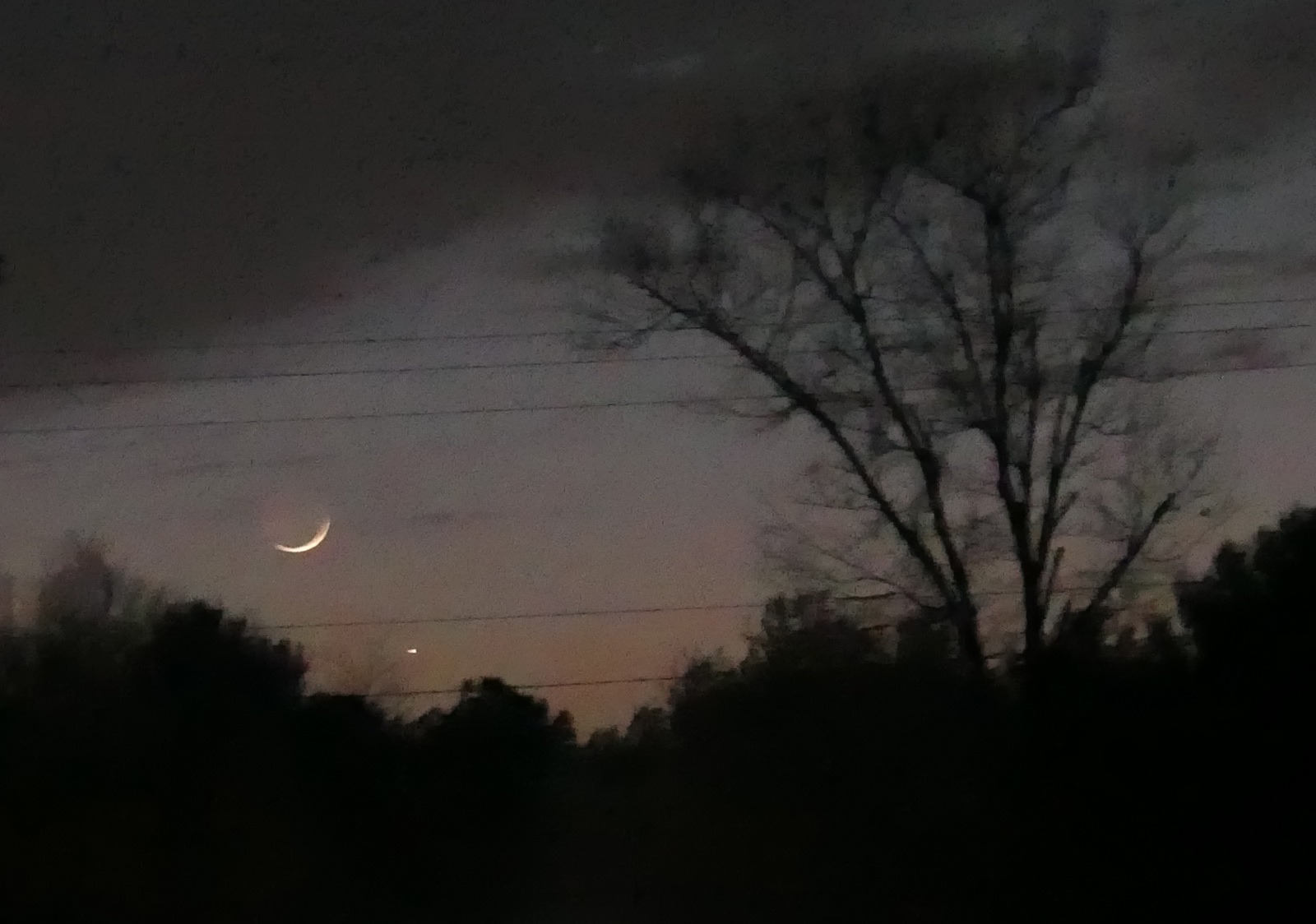 At the end of March, 2023, around the 27th, look at the evening sky. If you have a clear view of the western horizon, you'll be able to see Mercury, Jupiter, Venus, (and maybe faint Uranus), the crescent moon, and Mars.
At the end of March, 2023, around the 27th, look at the evening sky. If you have a clear view of the western horizon, you'll be able to see Mercury, Jupiter, Venus, (and maybe faint Uranus), the crescent moon, and Mars.
On March 22nd Dr. Jeff Kretsch took an evening photo through partially cloudy skies to show Jupiter and the Moon. Look for clear skies in the west and you'll find Mercury and Jupiter close to the horizon. Venus will be half way brtween the horizon and the Moon. Uranus is just a little higher in the sky than Venus, but it's faint and without binoculars, you may miss it. Just above the Moon is Mars, distinguished by its reddish color. [Don't be fooled by the stars of Procyon or Castor and Pollux or Capella that surround the moon at a greater distance. Mars is faint and relatively close to the moon on the 27th
- Details
- Category: Astronomical Events
For the last week we've been treated by Jupiter, Venus, and the crescent Moon in the evening sky. The closest approach of Jupiter to Venus for us in the Washington DC area is on the evening of Wednesday March 1 with the planets next to each other and level to the western horizon, separated by only 1/2 degree apart (about the diameter of the Moon). By the evening of March 2, Jupiter will be closer to the horizon than Venus, with a separation from Venus on not quite 1 degree. Below are photos from Kamana Mathur and Jeff Kretsch, and the planet motions through conjunction in early March from the planetarium software Stellarium.
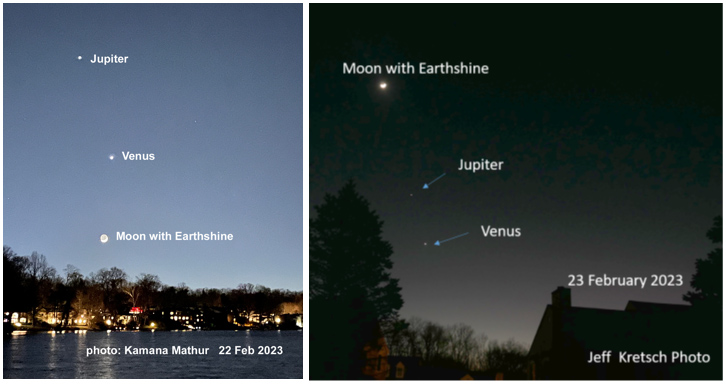
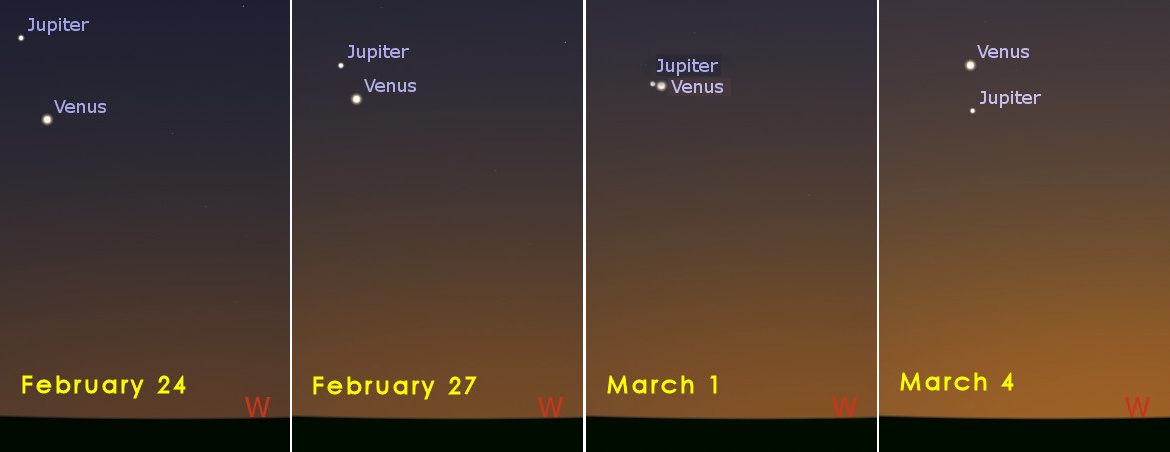
- Details
- Category: Astronomical Events
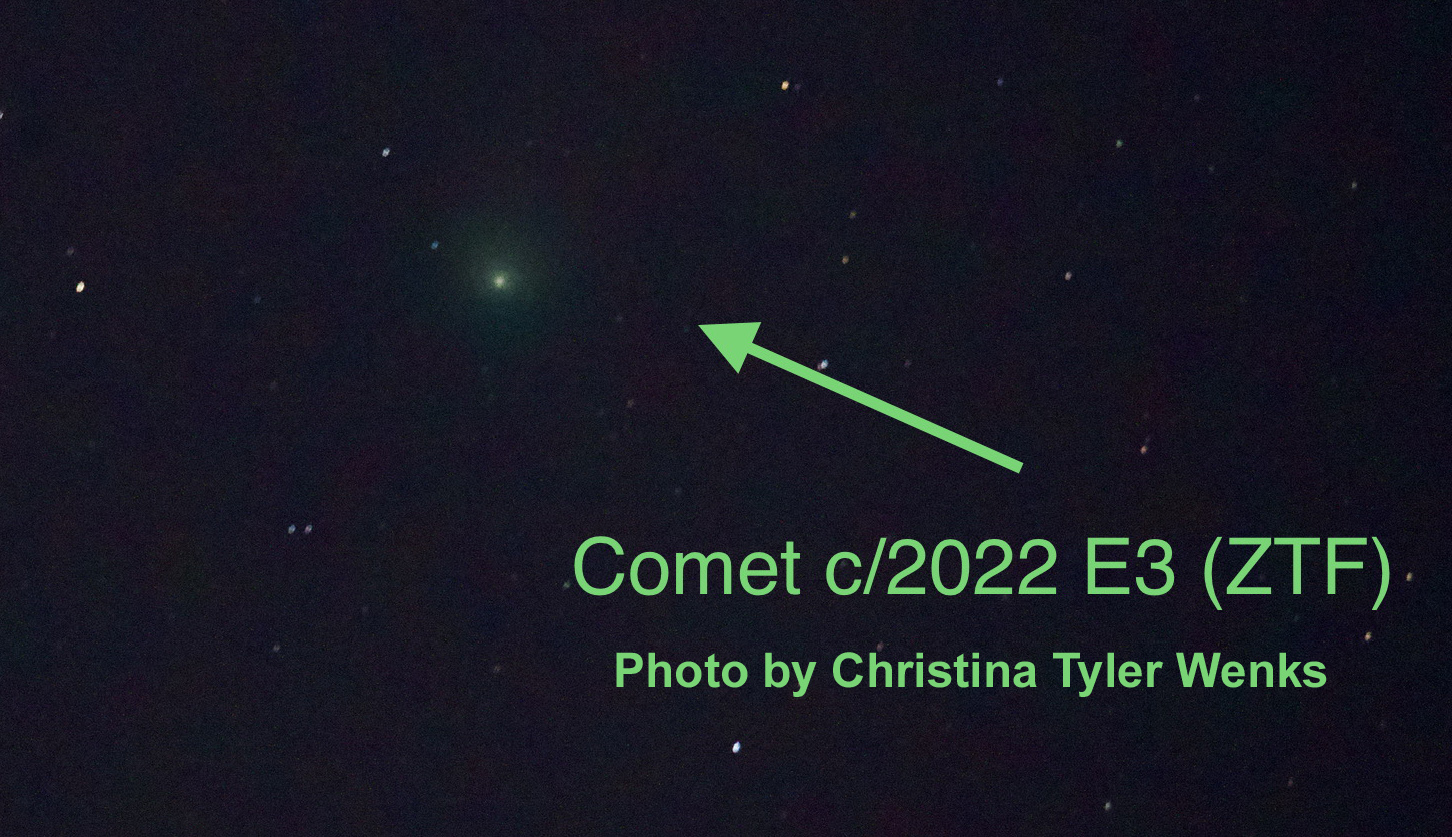 The “Green Comet” C/2022 E3 (ZF) becomes visible in binoculars at the end of this month and early February. We now have an excellent photo taken by Christina Tyler Wenks, Analemma Society Recording Secretary. In an email she said "This photograph was taken this morning, Jan. 27, at about 1 a.m. of Comet c/2023 E3 ZTF. Taken between bursts of fast moving thin upper layer clouds and thick mid-level clouds, I could only use short long-exposures.This is a single exposure with no processing, so I am thrilled the comet and star colors are so vivid."
The “Green Comet” C/2022 E3 (ZF) becomes visible in binoculars at the end of this month and early February. We now have an excellent photo taken by Christina Tyler Wenks, Analemma Society Recording Secretary. In an email she said "This photograph was taken this morning, Jan. 27, at about 1 a.m. of Comet c/2023 E3 ZTF. Taken between bursts of fast moving thin upper layer clouds and thick mid-level clouds, I could only use short long-exposures.This is a single exposure with no processing, so I am thrilled the comet and star colors are so vivid."
Comets are not big meteors streaking across the sky. Though they move fast by astronomical standards, you won’t see it moving in the telescope unless you spend several hours carefully noting its position against the background stars.
On Jan 12th it was closest to the sun and was low in the north-east. The comet will be visible over the next several weeks and will be closest to the earth around Feb 1st or 2nd. As it nears the Earth, it seems to move rapidly toward the North Star, Polaris and will be visible earlier in the evening. Download the attachment for details of where to find the comet in the sky.
The comet can be seen in binoculars and our telescopes provide even a better view. Come see the comet C/2022 E3 (ZFT) on a clear Friday Public Night in the next few weeks. The Friday Public observing is free at Observatory Park (open Friday 7:30 - 9pm) at Turner Farm in Fairfax Virginia.
- Details
- Category: Astronomical Events
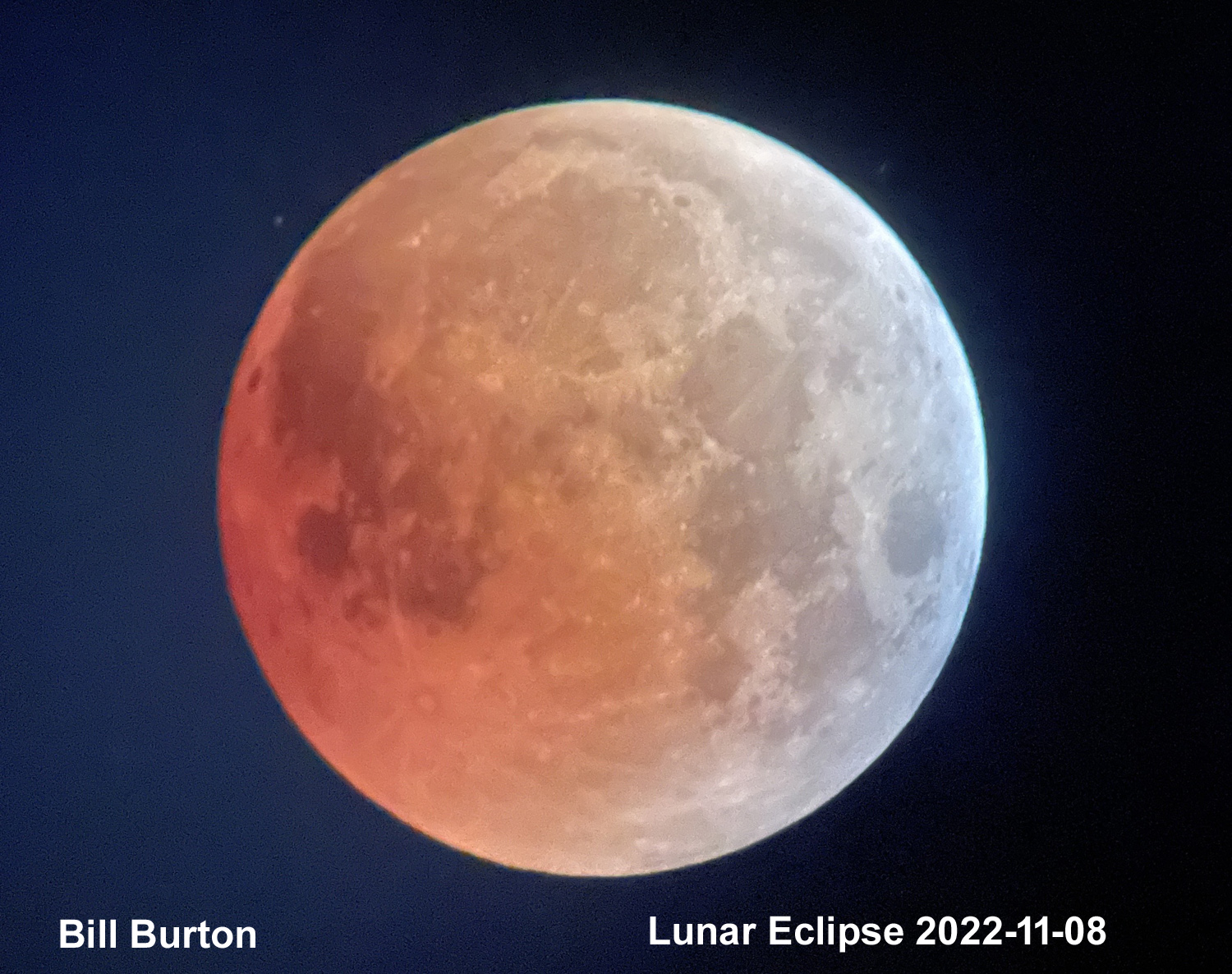 Was it the early AM hour? Was it excitement about voting later in the day? Whatever the reason, nearly 100 early risers came to Observatory Park at Turn Farm in Great Falls, VA to watch the lunar eclipse in the western sky. On that clear November 8th morning, Alan Figgatt and Jeff Kretsch opened the gate for public viewing at 3:30AM. A TV crew from WUSA channel 9 was expected, but due to other events, had to cancel at the last moment.
Was it the early AM hour? Was it excitement about voting later in the day? Whatever the reason, nearly 100 early risers came to Observatory Park at Turn Farm in Great Falls, VA to watch the lunar eclipse in the western sky. On that clear November 8th morning, Alan Figgatt and Jeff Kretsch opened the gate for public viewing at 3:30AM. A TV crew from WUSA channel 9 was expected, but due to other events, had to cancel at the last moment.
The lunar eclipse began at 4:09 AM and totality started at at 5:16 AM. The eclipse became difficult to see as civil twilght began brightening the sky an hour later. By 6:20 AM the moon was blocked by trees on the western horizon. Nevertheles, photographers had a ringside seat and took some great photos. They include Bill Burton, Jeff Kretsch, Kaushik Nagarkar, Dan Ward, and Christina T. Wenks. Scroll through the gallery below. Other astronomical photographs from the Observatory can be found at:
http://www.analemma.org/index.php/gallery-menu/astronomical-gallery
Lunar Eclipse 2022-11-08
- Details
- Category: Astronomical Events
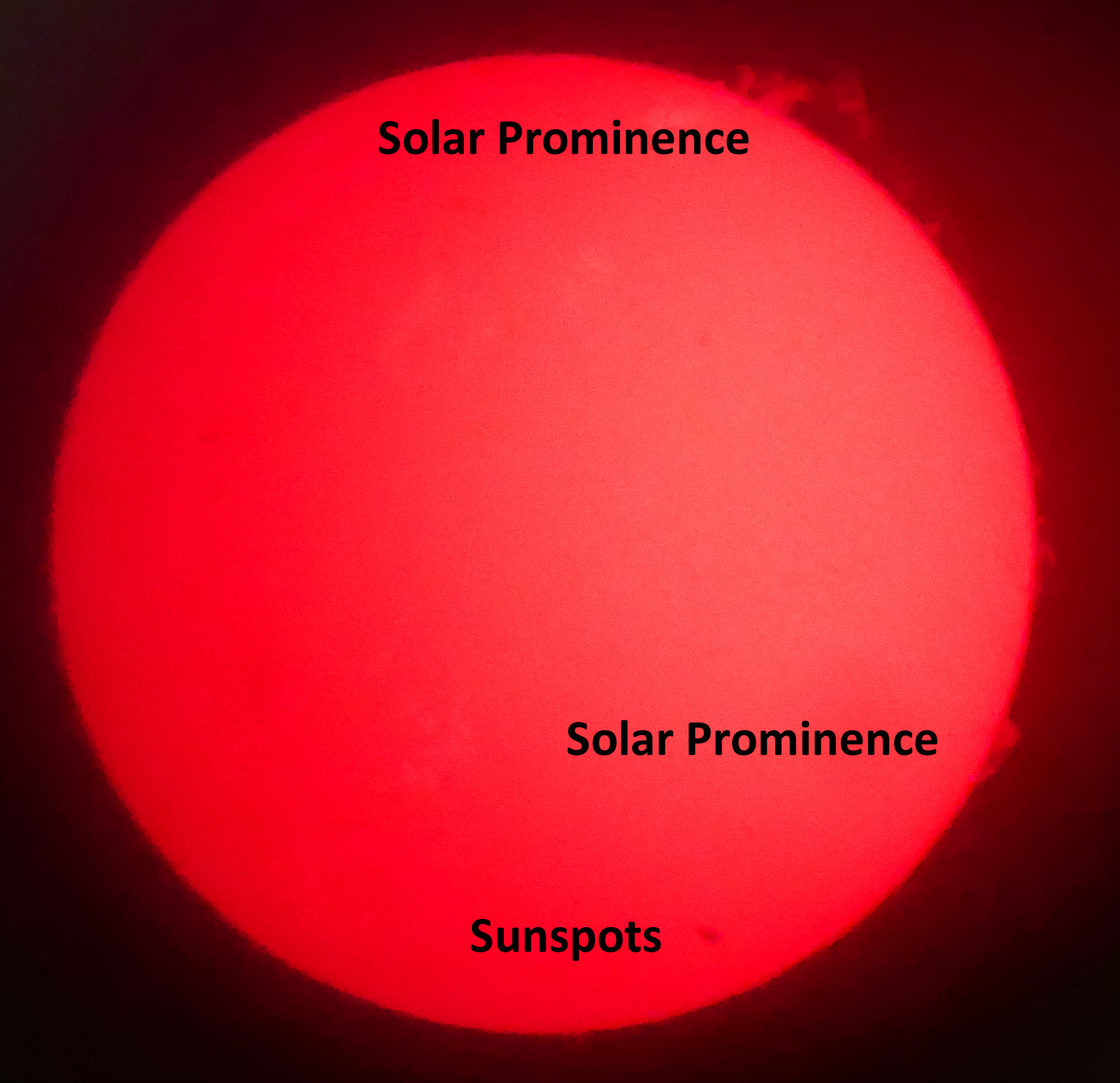 Dr. Jeff Kretsch used the Coronado Solar Telescope at Turner Farm Observatory Park on September 14, 2022. To enhance the image and see solar prominences on the edge of the solar disc, the telescope uses a hydrogen-alpha filter, letting in only the light from hydrogen atoms on the sun. Hydrogen comprises the majority of the mass of the sun, but looking at the sun in only one frequency of light from the hydrogen atom shows detail not available in normal "white light" images. NEVER LOOK DIRECTLY AT THE SUN unless you use a professional sun filter to block 99.999% of sunlight.
Dr. Jeff Kretsch used the Coronado Solar Telescope at Turner Farm Observatory Park on September 14, 2022. To enhance the image and see solar prominences on the edge of the solar disc, the telescope uses a hydrogen-alpha filter, letting in only the light from hydrogen atoms on the sun. Hydrogen comprises the majority of the mass of the sun, but looking at the sun in only one frequency of light from the hydrogen atom shows detail not available in normal "white light" images. NEVER LOOK DIRECTLY AT THE SUN unless you use a professional sun filter to block 99.999% of sunlight.
Page 2 of 7

